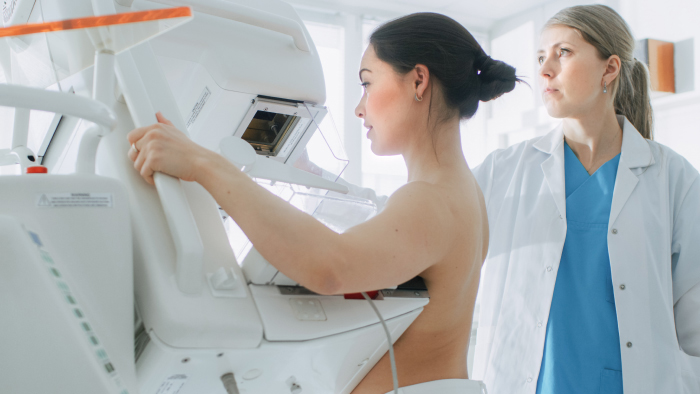By Phone
| Location | Phone Number |
| Illinois | 217-757-6565 |
| Wisconsin | 920-433-8329 |
Use MyHSHS
- Log in to MyHSHS.
- Select "Visits."
- Select "Request an Appointment."
- Select "Mammogram."
Regular mammograms are one of the best ways to detect breast cancer early. And when we catch breast cancer early, it’s the most treatable. Think of your mammogram as taking time for you — because you’re important.


By Phone
| Location | Phone Number |
| Illinois | 217-757-6565 |
| Wisconsin | 920-433-8329 |
Use MyHSHS
A mammogram is an X-ray of the breast, used to detect breast disease.

HSHS joins the American Cancer Society in recommending women aged 40 and older of average risk have a screening mammogram every year.
You may need to begin mammograms earlier than age 40 if you have:
Screening Mammogram
A screening mammogram is done when you have no symptoms of breast cancer, and it is considered a “routine” screening. You don’t need a doctor’s order to request a screening mammogram.
Diagnostic Mammogram
A diagnostic mammogram is done to check specific breast changes you may have found on a physical exam of your breast or during a screening mammogram. You do need a doctor’s order for a diagnostic mammogram.
If you experience any of the following symptoms, please see your physician immediately:

There are two main types of mammograms for breast cancer screening – 2D and 3D mammograms.
You have access to the latest in breast cancer screening and detection with 3D mammography technology near you at our HSHS locations in Illinois and Wisconsin.
No, you do not need a physician’s order to request a screening mammogram when you have no breast issues.
Illinois
If you live in Illinois, you do need to have a primary care provider to have a mammogram by Illinois law. If you do have breast issues, that may require a diagnostic mammogram which has to be ordered by your physician.
Wisconsin
If you live in Wisconsin, a doctor’s order is not necessary in most cases. We encourage all women to establish care with a primary care provider, but if you have no history of breast cancer, have no current breast issues or concerns, and are eligible for a routine screening mammogram, you can schedule an appointment without a doctor’s order.